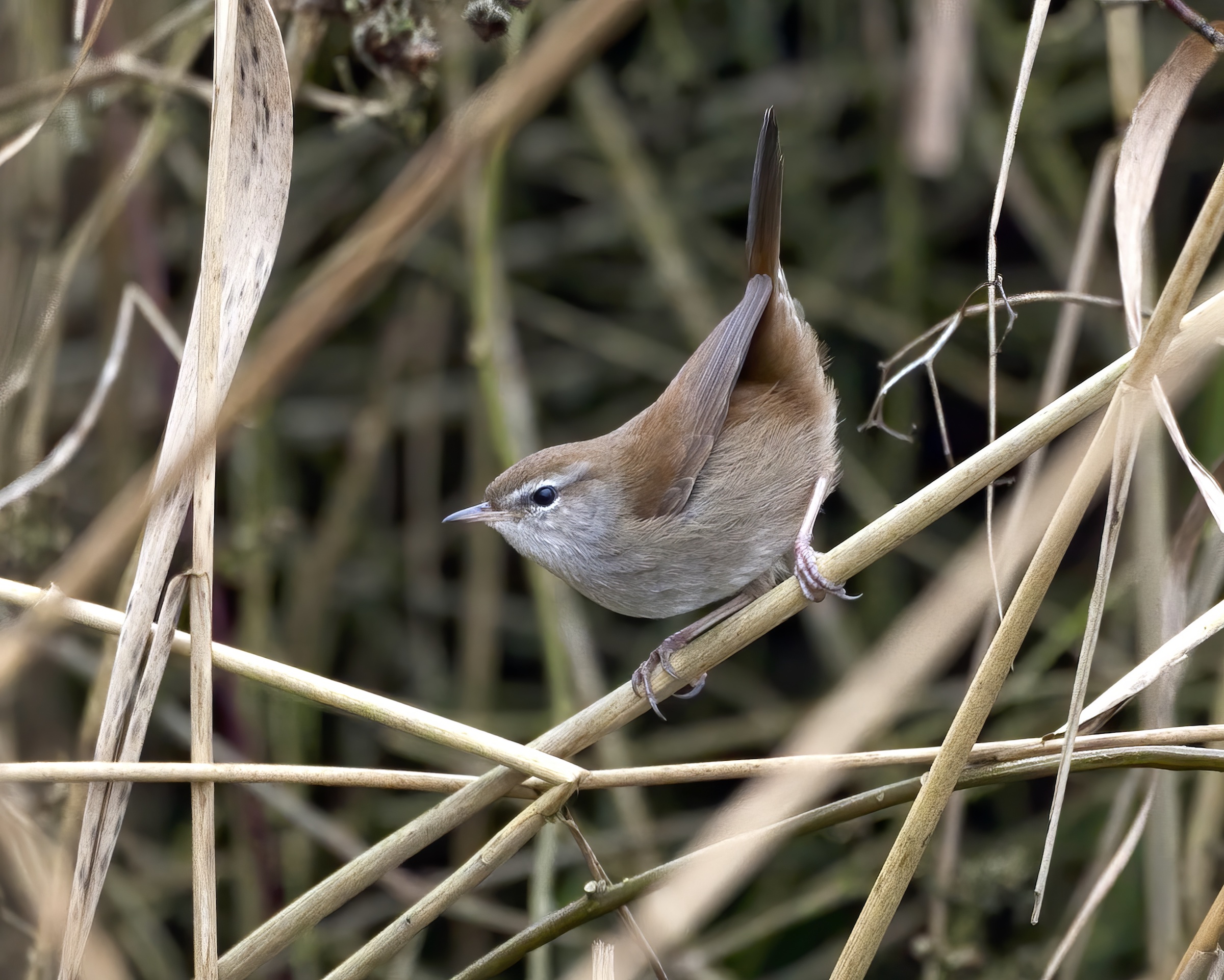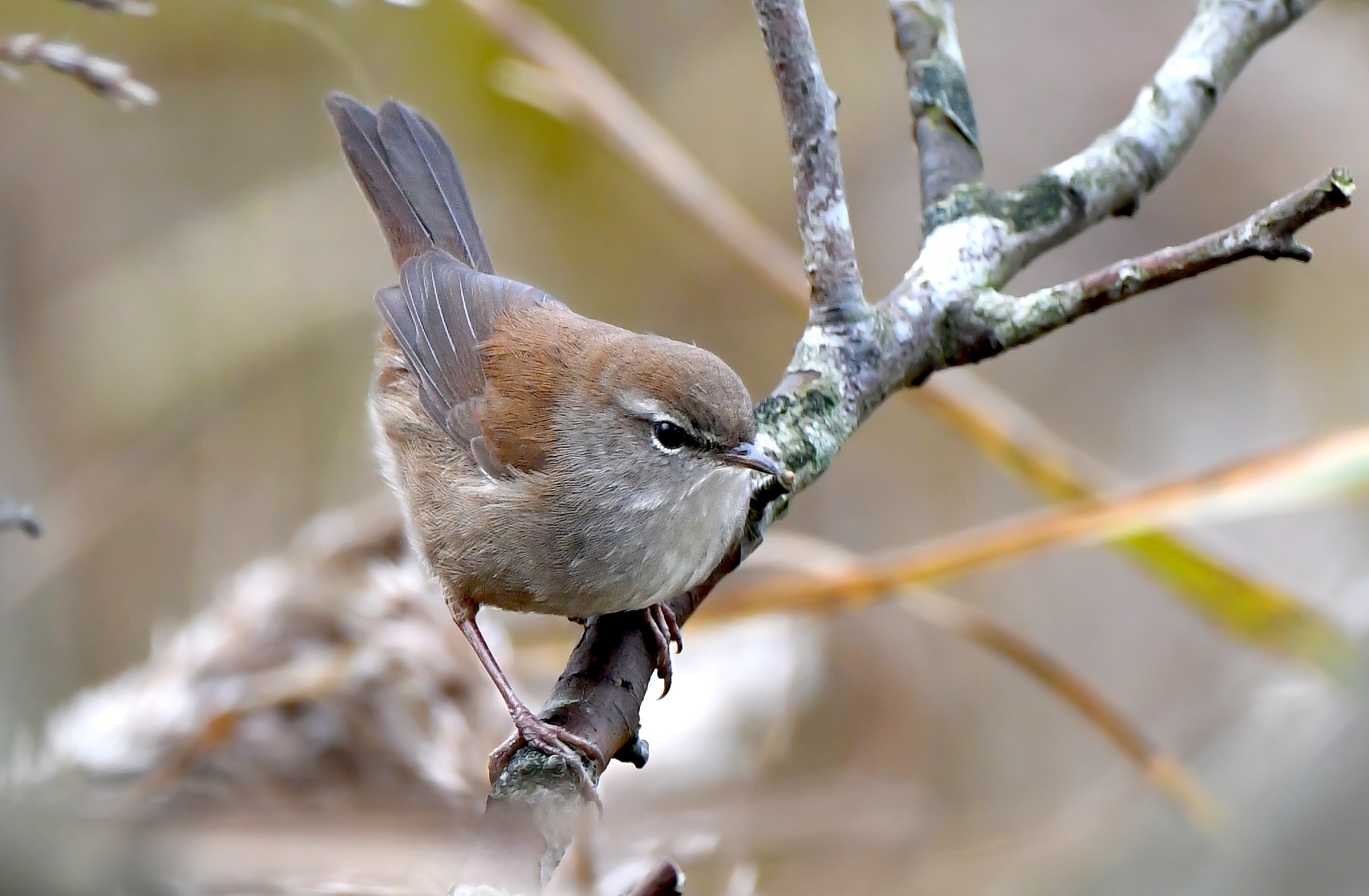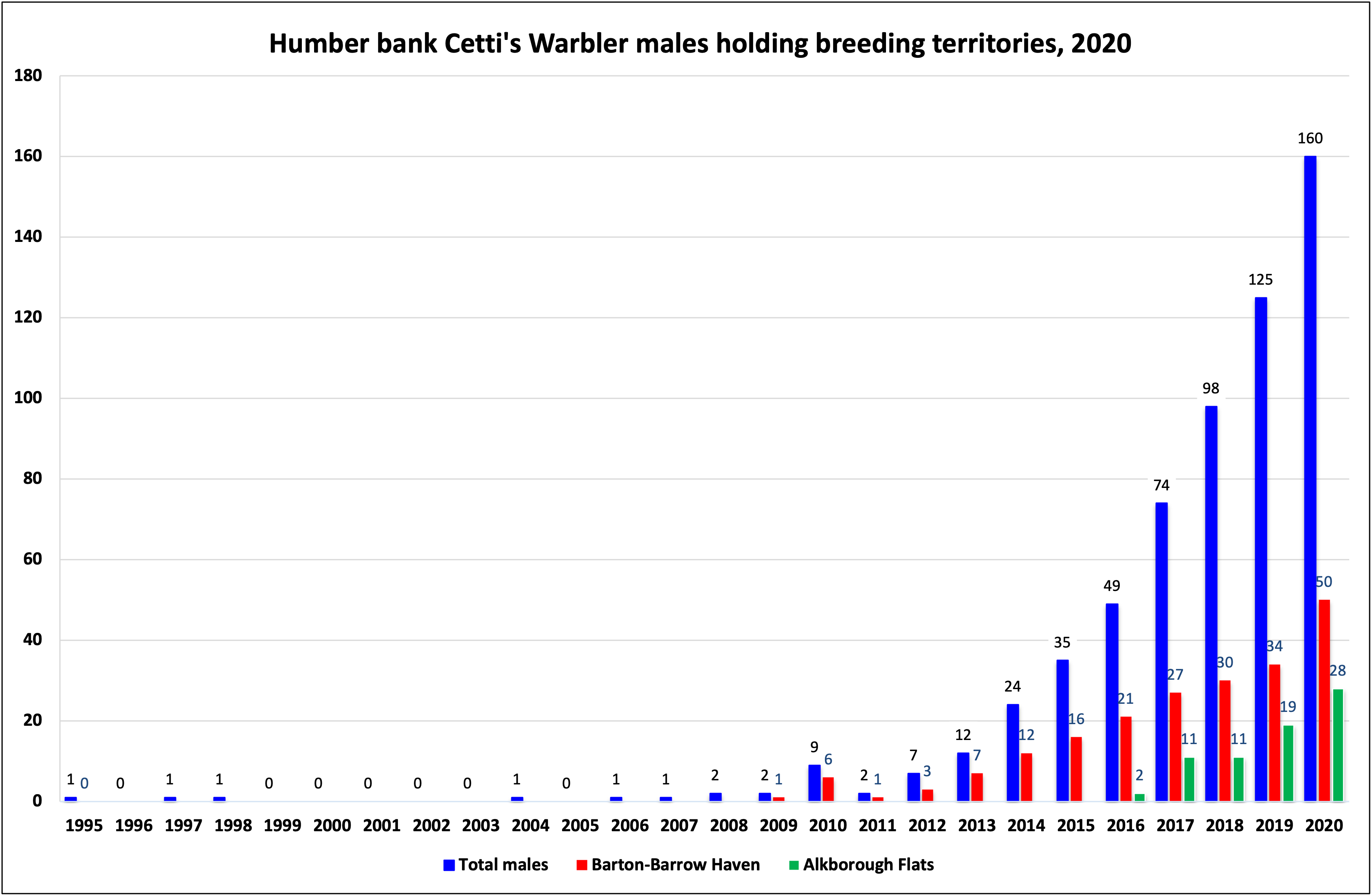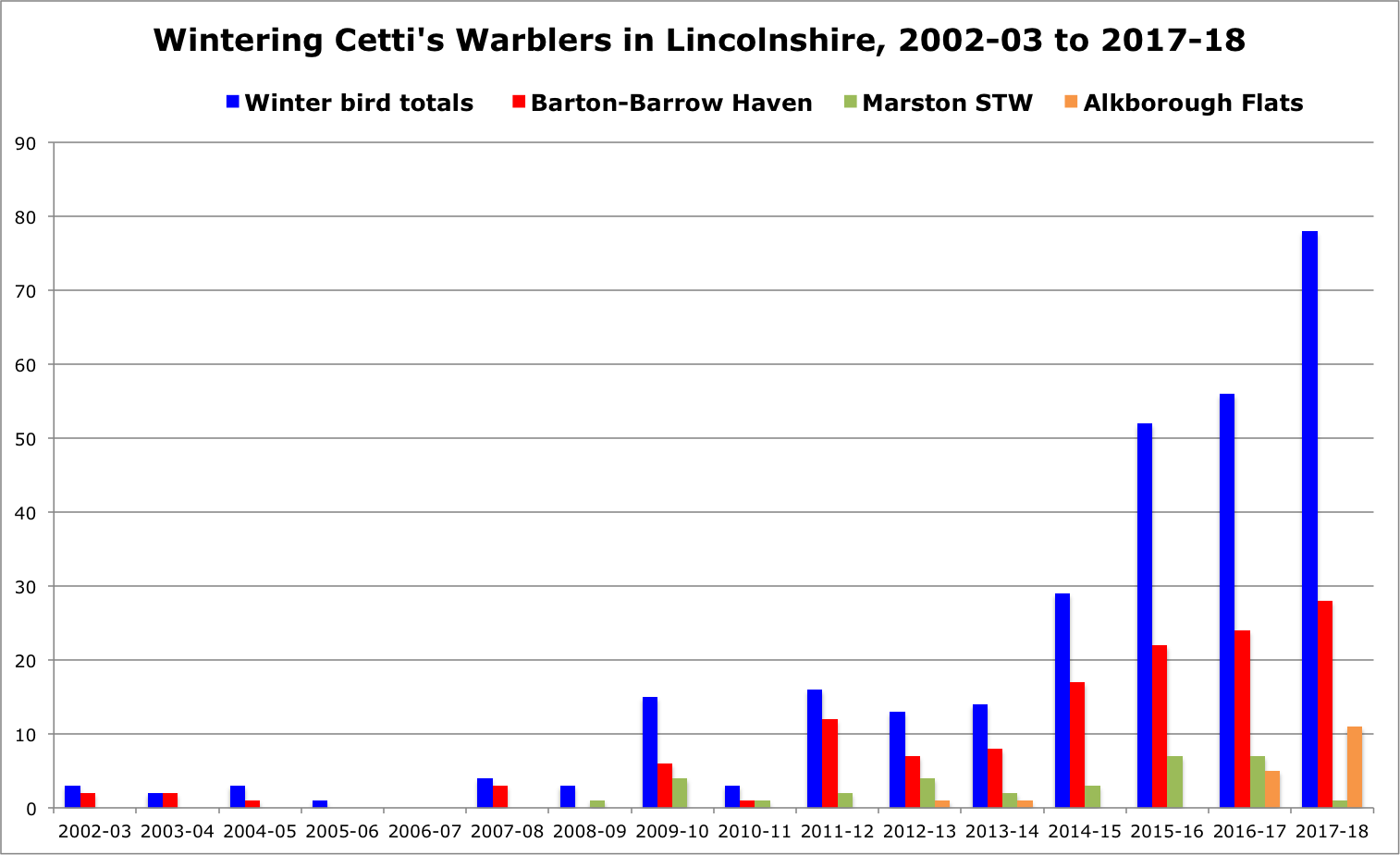Cetti's Warbler Cettia cetti
Scarce and increasing breeding resident and passage migrant/winter visitor; first proven breeding in 2008. RBBP records show that an average of 40 pairs per year bred during the period 2013-2017


The first county record of this species was on 6th March 1977. There were no more records until single birds were trapped at Theddlethorpe on 1st October 1983 and a decade later on 17th September 1993. The fourth county record was of a singing male at Langtoft Pits June 10th-July 8th 1995. It remained this way until the 2000’s when sufficient records were noted in the Lincolnshire Rare and Scarce Bird Report 2003-2007 to downgrade it’s status to “Very scarce passage migrant and winter visitor with some birds now resident”. Immediately afterwards the first proven breeding record occurred in 2008 when a singing male was located in the Bagmoor area on April 5th and noted frequently through June, and then with a family party of four juveniles on July 30th and August 3rd. Since then it's rise has been nothing short of meteoric - between 2008-2012 up to nine territorial males were recorded but thereafter numbers have increased exponentially: in 2017 there were 74 singing males but by 2020 there were at least 160 occupied territories. This increase has occurred largely in the Humber Bank clay pits whereas other sites such as Marston, Bardney and Kirkby Pits seem to have lost all of their breeding birds. The key area in the county remains the Humber bank pits with 92 of the 160 terriories between North Killingholme Haven and Alkborough Flats; 50 of these territories are along the stretch from Barton Pits to Barrow Haven pits. At Alkborough Flats, there were just two males in 2016 increasing to 28 in 2020. Numbers have also increased significantly along the River Freshney from two in 2014 to eight in 2016 and 10 in 2020. In the period 2010-2020 territorial males had been recorded at 47 different sites across the county.

Outside of the breeding season many males remain in their territories, but post-breeding dispersal sees birds appear in other habitats particularly along the coastal strip during September–November in particular. Non-vocal birds are particularly difficult to locate and recorded winter numbers are clearly lower than the number of birds present (chart below).

Some coastal passage is evident in spring and autumn with some long-staying birds at Gibraltar Point during the autumn. Movements and dispersal are well shown by two significant ringing recoveries out of a total of 1624 birds ringed in the county up to 2017. An adult male caught on July 23rd 2012 at Marston STW, re-trapped there on August 2nd 2012, and then a year later it was caught on July 19th 2013 at Middleton in Warwickshire, 84km WSW of Marston. The second recovery was of a juvenile female ringed on July 16th 2009 at Rye Meads STW, re-trapped there twice in August and September 2009 and then caught at Marston STW on December 1st 2009, 141km NNW. As yet, there are no recoveries of foreign-ringed birds in Lincolnshire but birds ringed in Belgium and The Netherlands have been recovered elsewhere in Britain. Cetti’s Warblers are usually double-brooded so their productivity can be quite high. Females disperse further than males, and juveniles in search of a territory disperse further than adults. There have been several recoveries of British-ringed birds having moved more than 300km within Britain, so in theory the county breeding population should eventually populate all the suitable habitat.
Reference
Catley, G.P.(Undated). Lincolnshire Rare and Scarce Bird Report 2003-2007, 113-114. Lincolnshire Bird Club publication.
(Account prepared March 2019, includes all data to 2017).
